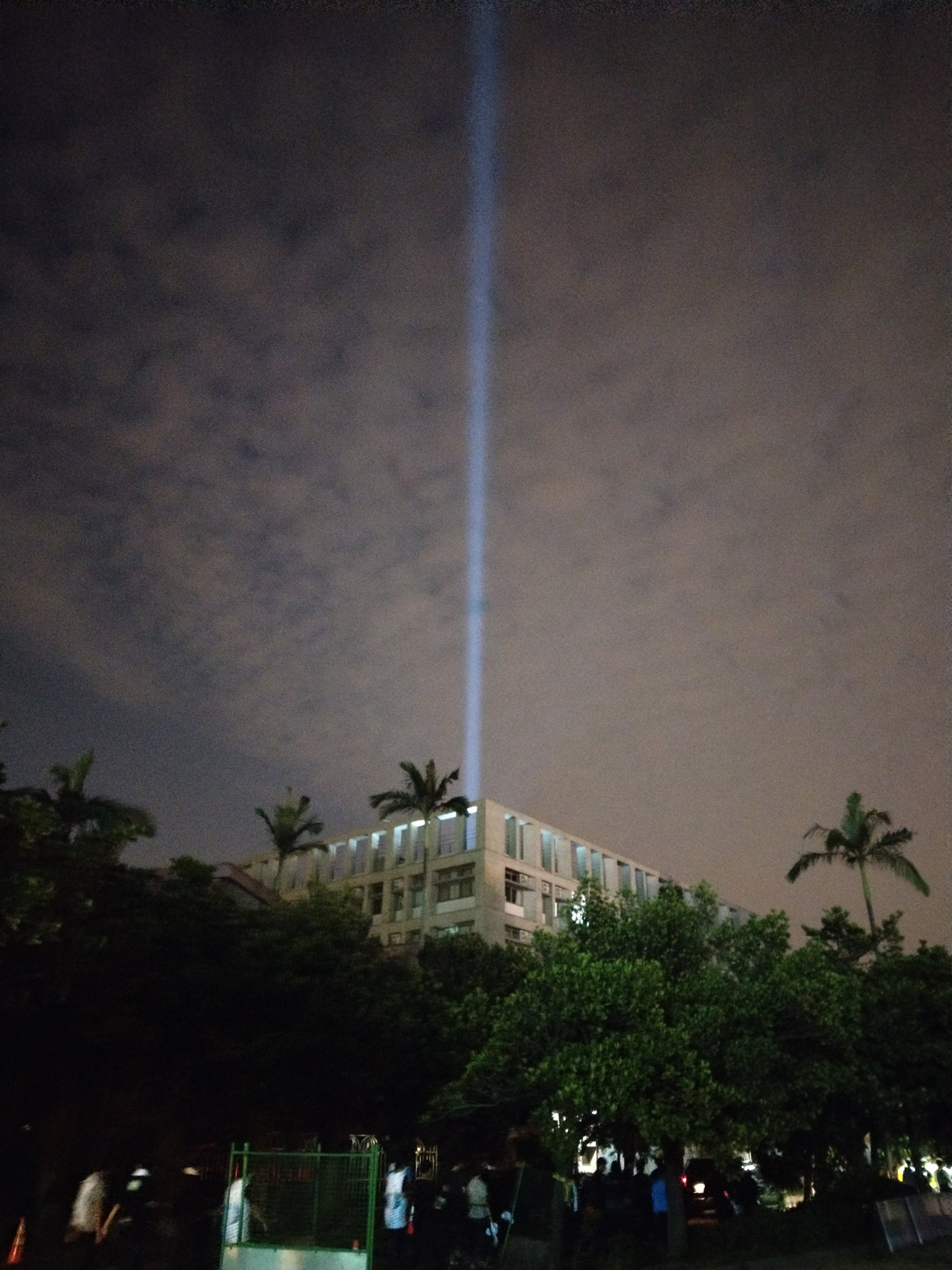Research Team Led by Prof. Ching-Cherng Sun Developed the LED Beams that Touch the Sky
Posted on: 2021-12-27
When night fell upon the campus, brilliant beams of light reached the sky from a side of the blue track and field stadium at NCU, attracting many people’s attention. The research team led by Professor Ching-Cherng Sun from the Department of Optics and Photonics at NCU developed an LED device, which could project the LED beam that could reach a distance up to 12 kilometers. Their research result was published in an SCI journal, Crystals.
Professor Sun’s research team adopted a special optic design and successfully fabricated a projector lamp with an “extremely narrow beam angle.” When the lamp projects light into the night sky, the light beam is brilliant. The team set up a base on top of the Kwoh-Ting Optics and Photonics Building; 144 arrays of light sources illuminated simultaneously, which could be seen from afar. The demonstration became a highlight at NCU that night.
Professor Sun indicated that an LED lamp that projects a light beam that could reach a distance of 12 kilometers is not created for grandstanding. However, the lamp can light up the sky for travelers and help them see their path more clearly. Anonymous heroes hide in the capital of optics, working hard silently. They have made profound theories more accessible.
Interestingly, this light beam had ever exerted magical power many years ago. The light source was split into two parts, and the principle of the “impulse response” was applied to help FORMOSAT-5 carry out photographic calibration as the satellite was launched into the sky. FORMOSAT-5 captured the images of two special patterns in space 400 to 500 kilometers away from the earth. When the images came in, the whole research team was very excited. It was sort of a surprising reward!

Last updated: 2022-10-31
Posted by: Academic News
Visit counts: 1359



